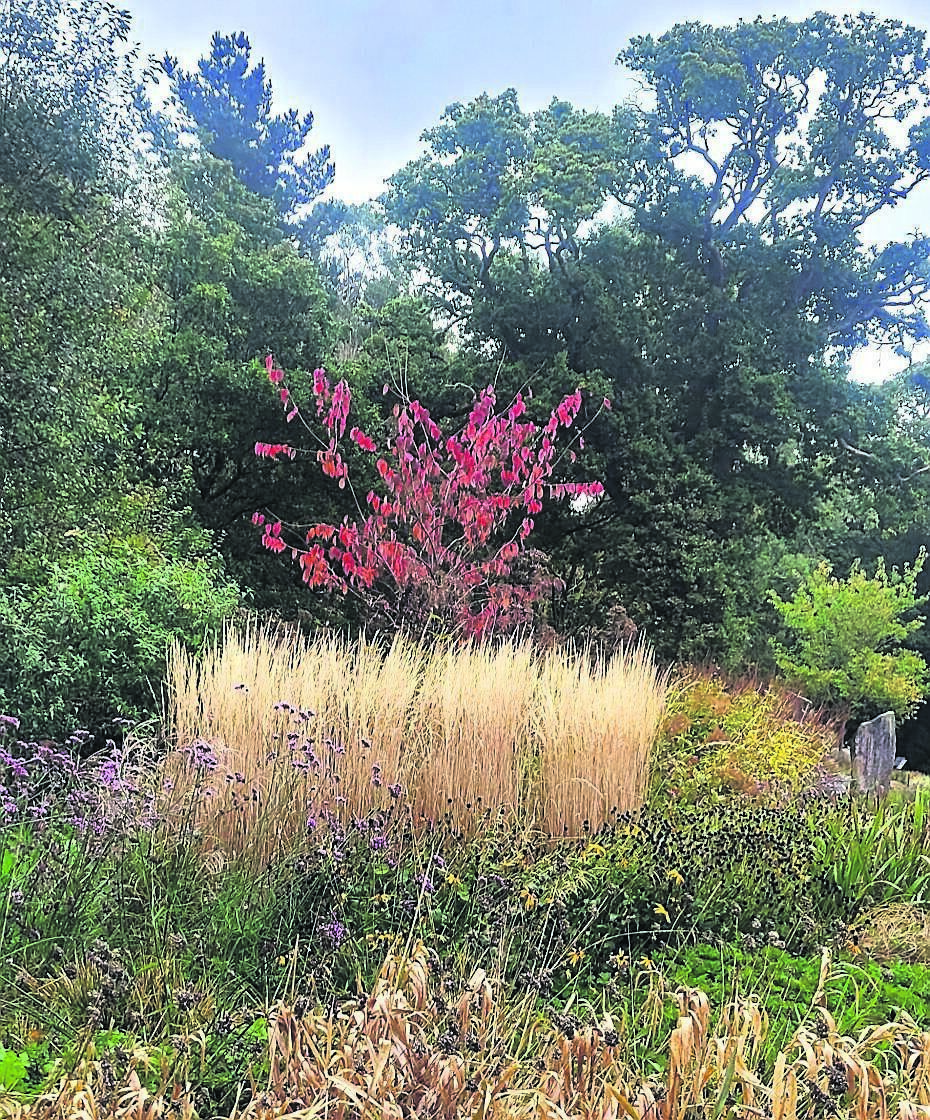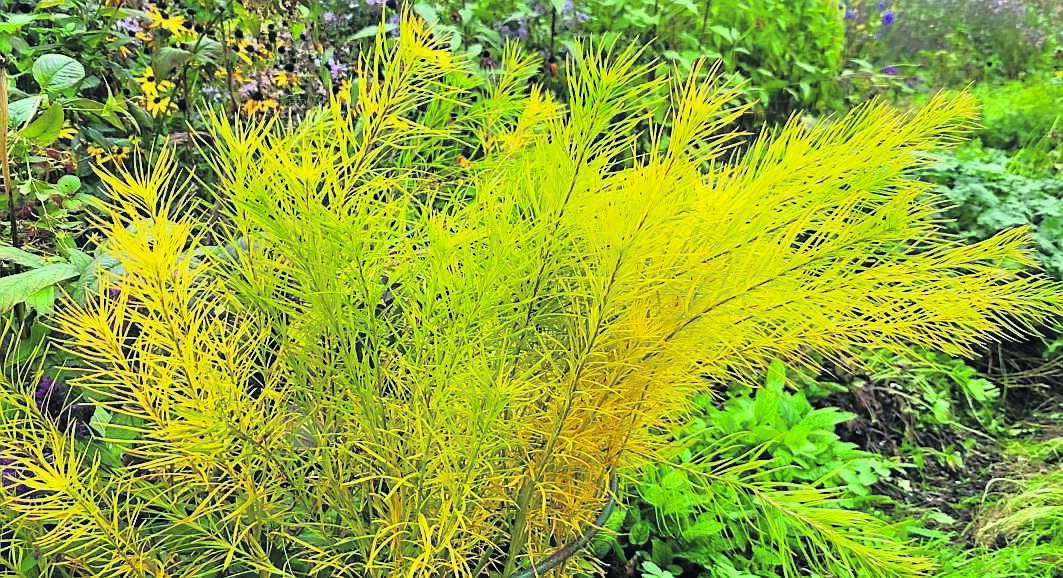A great cone to use in a festive arrangement

The attractive cones of Pinus strobus, or white pine, can be collected now for use in seasonal arrangements
THE first weekend in November and the wind and rain continues, let us hope for perhaps a little drier and more settled weather as the month progresses!
The change of the clocks last weekend means brighter mornings, but alas the evenings are fading fast now!
October was difficult, with the soil saturated and frequent flooding making it challenging to work in the garden.
Working on very wet soil can do a lot of damage by compacting the ground, squeezing valuable oxygen out, which plants roots need to grow and thrive, as well as soil microbes to aid in the breakdown of organic material in the soil.
There is lots of seasonal work in autumn that requires digging, like dividing perennials, planting bulbs and transplanting shrubs or trees that may have outgrown their space.
Many of these jobs have been put on hold and we will just have to see what the month ahead brings.
With November comes thoughts of the festive season ahead and collecting materials from the garden for use in arrangements or gifts is always a great idea.

Top of my list this year are the cones of Pinus Strobus, or the white pine, with their sticky white resin which makes them the ideal frosted festive addition to an arrangement.
The seed heads of honesty also make such a lovely delicate dried addition to wreaths and swags for the door or mantle.
Looking around the garden, the berries are being gobbled up at a rapid rate now as the birds start getting hungry heading into the winter. Holly have lots of berries this year which will hopefully last until nearer the end of the year.
It’s time to clean off the bird feeders and fill them with fresh seeds as the temperatures begin to drop - our feathered friends will be glad of the supply and, if positioned well, they can provide us with hours of entertainment as we try to correctly identify each visitor.
Becoming familiar with the birds visiting our gardens is an excellent occupation and that knowledge can be shared with Birdwatch Ireland, who compile population numbers each year in an effort to assess how our bird populations are doing. Check out their website, www.birdwatchireland.ie for more information on taking part.
There are also some great tips about gardening for wildlife and what we can do in our gardens to make them more friendly to birds and other wildlife. Plus, there is a full A-Z list of common Irish birds to help with identification.
One of the things that we can consider this autumn/winter is leaving the seed heads of herbaceous perennials in place and waiting to do the big clean up until the spring, as this allows for birds and insects to feed on the seed and also maintains housing for insects to overwinter in hollow stems and the cover that decaying vegetation provides.
It may not look very pretty, but when we know it is serving a meaningful purpose, then it makes more sense.
A minor clean-up may be a good idea to make way for some spring bulb planting before the year is out, but leaving the plant material to decay in situ will mean that there is a much less volume to remove in the spring, as much of the decaying plant material will have melted into the soil over the winter months.
There is plenty of autumn colour to be enjoyed in the garden, with trees, shrubs and herbaceous perennials colouring up nicely as they respond to the shortening days and prepare for winter by ceasing the production of chlorophyll, which is responsible for the green colouring in the leaves of plants.
Once chlorophyll is no longer produced, then the colours of other compounds in the leaf are expressed, revealing reds, yellows, oranges and browns throughout the months of autumn as the leaves die and fall from the trees.

Collecting, pressing and drying some of these leaves for use in making cards, or wiring them and including them in flower arrangements, can be a very creative pastime this autumn.
This would involve collecting on a dry day and placing the leaves between tissue paper with a weight on top - books are useful.
Some of the most dramatic plants for autumn colour are the larger trees and shrubs like Acers, Parrotia, Dogwoods, Cherries and Oaks.
There is also some great autumn colour to be seen in the herbaceous border, with the delicate ferny foliage of Amsonia ciliata providing dazzling golden hues toward the front of the border before it drops its leaves and sinks into a slumber for the winter.
Ornamental grasses really begin to shine in October and November as their flowering stems still stand tall when the leaves turn various shades of orange, yellow and brown.
Miscanthus sinensis ‘Maleparthus’, Pennisetum villosum, Panicum virgatum ‘Heavy Metal’ and Molina caerulua ‘Dauerstrahl’ are all good grasses in our damp climate and perform well in autumn and winter, standing up well to the vagaries that winter brings with it!
Plant of the Week
Amsonia ciliata is a herbaceous perennial with delicate foliage and bears clusters of blue star shaped flowers in early summer.
One of its most alluring features is the autumn colour of its foliage, which turns golden yellow before falling to the ground.
The plant gets to about 60cm tall and 40cm spread and is best grown in a free draining sandy soil in full sun.
The texture of the foliage during the summer months adds good contrast in a mixed border, combined with flowering and autumn leaf interest this is a good value plant for interest over many seasons.







 App?
App?


